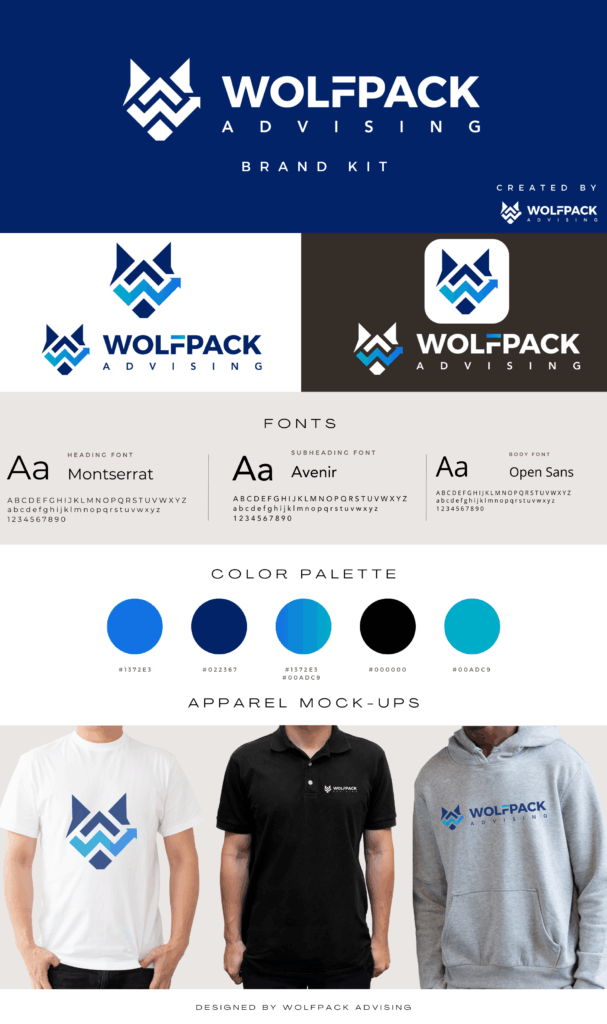Last updated on May 27th, 2025 at 02:19 am
Small business branding is much more than choosing a few colors and designing a logo. It’s the way customers see, feel, and remember your business. From your tone of voice on social media to your packaging, your brand is always speaking for you, even when you’re not in the room.
For small businesses, effective branding is often the key to standing out in a crowded marketplace. When done right, it creates a lasting impression, builds customer loyalty, and attracts the right audience. If your brand doesn’t connect with people or stay consistent across channels, you’re missing out on valuable growth opportunities.
This post walks you through everything you need to know about small business branding, including key components, common mistakes, and how working with a marketing agency can give your brand the edge it needs.
Why Small Business Branding Matters More Than Ever
Branding is the emotional bridge between your business and your customer. It’s how people remember you. It’s the reason they trust you and come back instead of heading to a competitor. Small business branding helps you:
- Establish credibility: A well-developed brand gives even a small or new business a professional and trustworthy image.
- Attract your ideal audience: Clear branding speaks directly to the people you’re trying to reach. It builds a connection from the very first impression.
- Create consistency: Branding ensures that your messaging, visuals, and tone remain the same wherever people find you, your website, emails, storefront, or social media.
- Increase brand recognition: Over time, consistent branding helps customers instantly recognize your business through your logo, color palette, or tagline.
- Support growth: As your business grows, a strong brand scales with it. It helps you introduce new services, expand to new markets, and hire a team that aligns with your values.
In short, small business branding gives your company a voice, a look, and a story that sets you apart.
According to a study by Lucidpress, businesses that maintain consistent branding across all platforms can see a revenue increase of up to 23 percent.
The Essential Parts of a Strong Small Business Brand

A successful brand isn’t created overnight. It’s built through a combination of strategy, creativity, and consistency. These are the foundational elements that every small business needs:
- Brand Purpose and Mission
Your purpose is your “why”, the reason you exist beyond making a profit. Your mission statement should clearly express what you offer, who you serve, and how you’re different. For example, a local coffee shop might have a mission to create a community hub while serving high-quality, ethically sourced coffee. - Target Audience
You can’t brand for everyone. Narrowing in on your ideal customer helps you design branding that truly resonates. Consider age, location, values, challenges, and buying habits. The better you know your audience, the better your brand can speak to them directly and emotionally. - Brand Personality and Voice
Think of your brand as a person. How does it speak? Is it friendly and informal or sleek and professional? This personality should be consistent across all platforms, from your Instagram captions to your customer support emails. A clear voice helps customers build a personal connection with your business. - Visual Identity
This includes your logo, brand colors, fonts, icons, photography, and design style. Visual branding should feel cohesive and instantly recognizable. Each element should reinforce your brand values. For example, an eco-conscious business might use earthy tones, soft fonts, and minimalistic design. - Brand Messaging
Your messaging includes your tagline, slogans, value proposition, mission statement, and any content used in marketing. This is where your brand’s voice and values come to life in words. Great messaging is simple, emotional, and specific. It quickly tells customers what you do and why you’re their best choice.
Branding Mistakes That Can Hold You Back
Many business owners skip over branding or take shortcuts. That can hurt in the long run. Here are the most common mistakes we see when it comes to small business branding:
- Being inconsistent across platforms
Maybe your Facebook page says one thing, your website says another, and your logo looks different on your packaging. Inconsistency confuses customers and makes your brand forgettable. Every touchpoint should look and feel the same. - Copying competitors
It’s tempting to mimic a successful brand in your industry. But if you blend in, you’ll never stand out. Your brand should reflect your unique story, voice, and values, not someone else’s. - Forgetting to define a brand voice
Using different tones depending on the day or platform makes it hard for customers to connect. Your brand voice should be intentional and documented, so it’s easy for anyone on your team to follow. - Overcomplicating design
Trying to use too many fonts, colors, or design styles makes your brand look messy. Clean, minimal, and intentional designs are easier to remember. - Changing branding too often
Consistency builds trust. Rebranding every year can leave your audience confused and disconnected. Evolve your brand gradually and only when it makes strategic sense.
How to Build a Brand That Lasts

The best small business branding comes from following a clear, thoughtful process. Here’s what that looks like when working with a professional team or agency:
- Discovery
Start by digging deep into your business goals, mission, values, and customer insights. This step is about uncovering the core of your business. We ask questions like: What problem do you solve? What makes you different? What does your ideal customer care about? - Strategy Development
With this insight, we create your brand strategy. This includes defining your brand’s position in the market, crafting a unique voice, identifying your visual direction, and outlining messaging that connects. - Design and Visual Creation
Now comes the creative part: designing your logo, selecting your colors and fonts, and creating templates for everything from social media to your business cards. Every design choice is guided by your strategy to ensure it aligns with your goals. - Brand Messaging and Content
Words matter. We develop messaging that tells your story clearly and emotionally. This includes your tagline, brand story, elevator pitch, and sample messaging for various platforms. - Brand Guidelines
We compile everything into a brand guide. This document outlines your logo usage, color codes, typography, tone of voice, imagery rules, and more. It helps your entire team stay aligned and consistent over time. - Launch and Implementation
Once your branding is ready, we help you apply it everywhere: your website, social media, signage, marketing materials, product packaging, and email templates. This is the phase where your new brand becomes visible to the world. - Monitoring and Ongoing Support
Brands aren’t set in stone. Over time, you’ll need to adjust as your audience grows, your services change, or new competitors emerge. We provide support to help keep your small business branding fresh, relevant, and powerful.
The Emotional Side of Branding
The best small business branding doesn’t just look good, it makes people feel something. When your brand reflects your values, speaks in a relatable tone, and delivers on its promises, customers become emotionally connected. They trust you. They recommend you. They stick with you through ups and downs.
That connection drives loyalty and referrals. A well-loved brand becomes more than just a business. It becomes part of someone’s daily life or community identity.
Why Partnering with a Marketing Agency Works
Trying to build a brand on your own can feel overwhelming. There are endless choices to make. A professional agency removes the guesswork. We guide you with clarity, strategy, and creativity. Here’s what we bring to your branding journey:
- Experience across industries: We’ve helped businesses from coffee shops to law firms create standout brands.
- Professional design and messaging: You get a cohesive brand that looks and sounds like it belongs in your industry, but stands out.
- End-to-end support: From discovery to launch, we handle every step. No more DIY confusion or wasted time.
- Big-picture thinking: We make sure your brand connects to your marketing, your website, and your long-term goals.
The right agency becomes a partner in your growth. We’re invested in your success and know how to bring your brand to life in ways that work.
Conclusion
Small business branding is the foundation of everything you do. It builds credibility, attracts the right customers, and sets you apart from competitors. Without it, you’re just another business in the crowd.
If you’re ready to grow, connect, and get noticed, let’s work together. Reach out today and let’s turn your business into a brand people remember.




